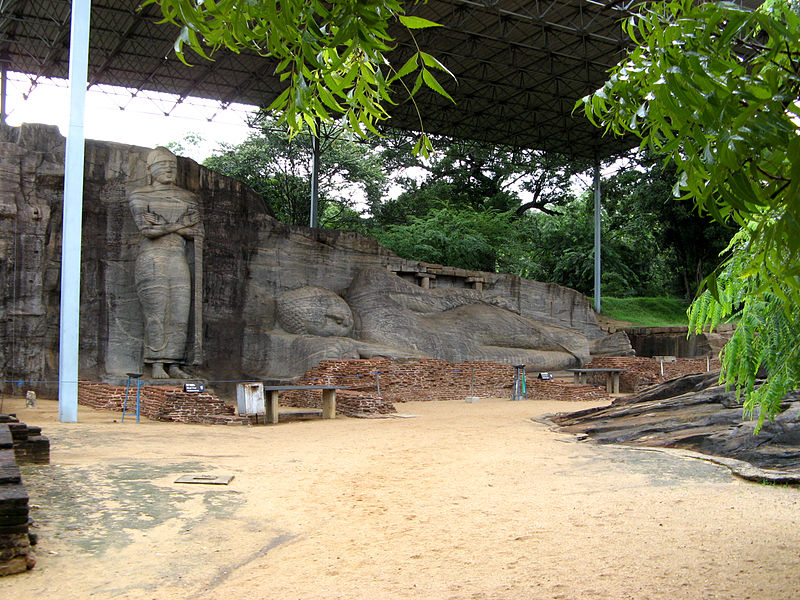
Gal Vihara
Polonnaruwa
These four Buddha sculptures (two are seen here; closeups of them, and the other two, on the following pages) were carved out of a single granitic outcrop, and were originally protected by individual enclosures. Art historians justifiably consider them to the the best rock-carved statues in Sri Lanka, because of their serene yet humanistic expressions and the technical excellence of their stonework. They date to the 11th century, although the seated figure in the excavated cave may be 10th century1. The beauty and historical importance of these sculptures has given rise to several different interpretations2. Briefly, some scholars think that the standing figure represents Ananda, and others (inconsistently) that the reclining figure represents Buddha asleep rather than in Parinirvana. The modern consensus3 is that all four are Buddha, and that the sleeping figure is indeed in Parinirvana.


